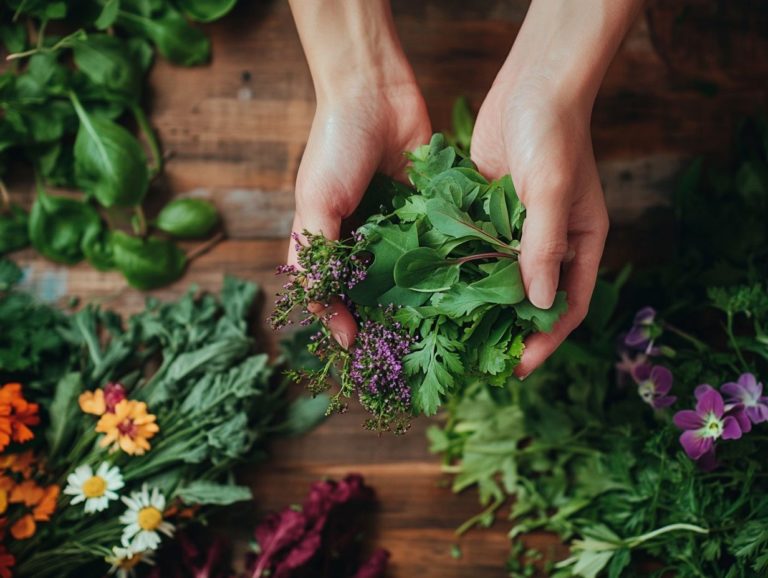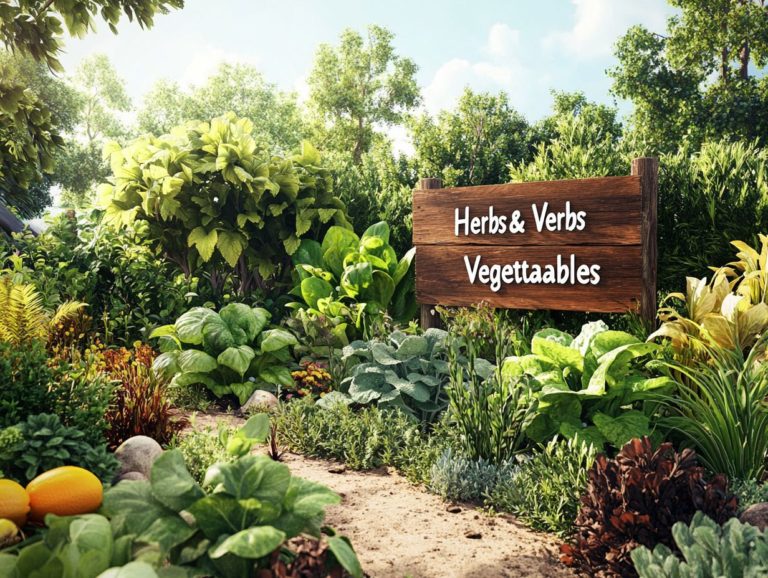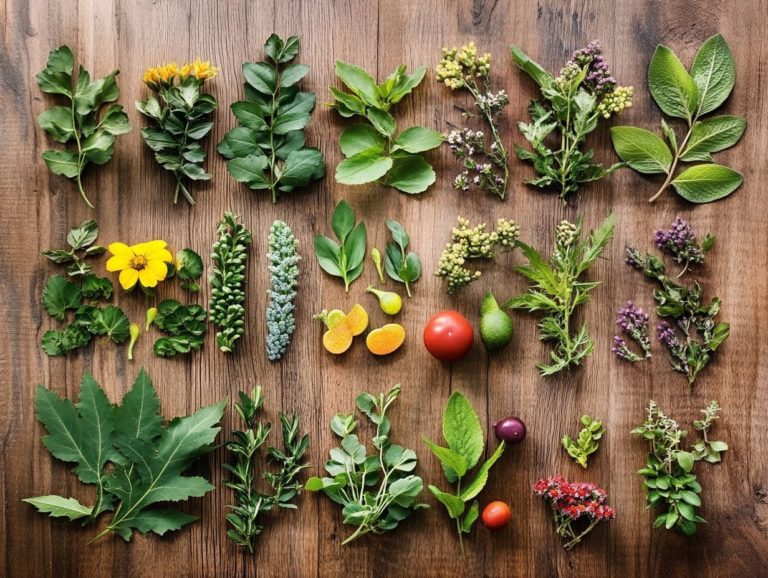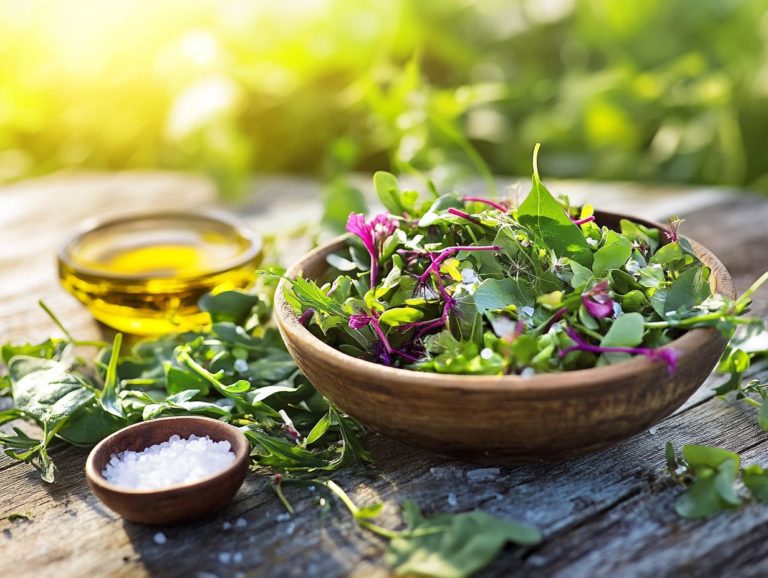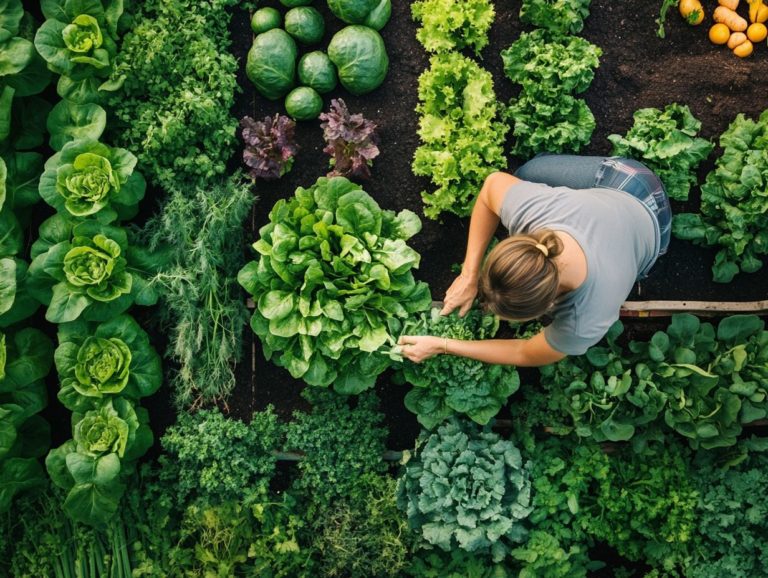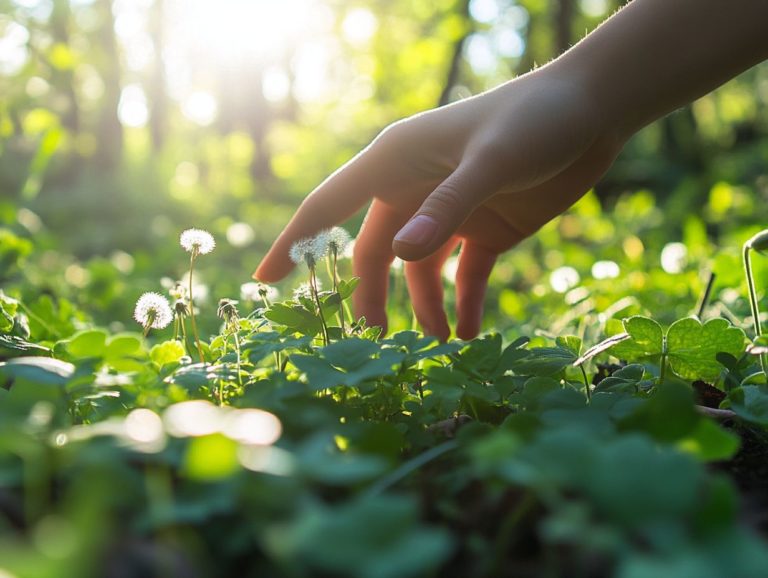How to Cook with Foraged Edibles
Foraging has become a popular pursuit, inviting you nature enthusiast and culinary adventurer alike to venture into the great outdoors in search of edible treasures. Join the foraging movement today and discover delicious edibles waiting for you in the wild!
This guide equips you with essential knowledge to identify and harvest common plants and fungi, along with best practices for gathering them. You’ll discover how to clean, prepare, and seamlessly incorporate these foraged delights into your meals.
You’ll also delve into important safety considerations and ethical foraging practices, ensuring your approach remains sustainable. Get ready to enhance your cooking with nature’s gifts!
Contents
Key Takeaways:
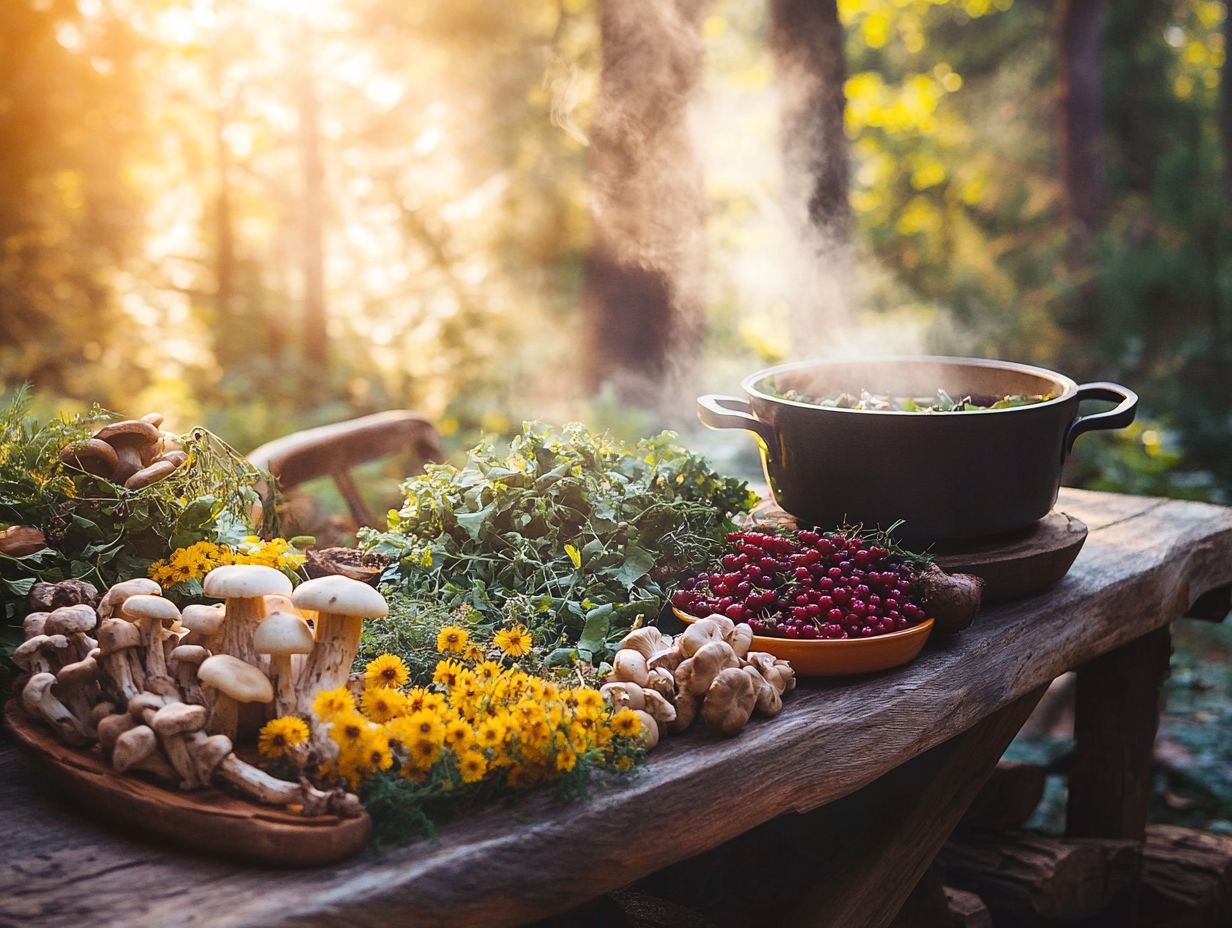
- Learn to identify and harvest common edible plants and mushrooms to safely forage for food in the wild.
- Clean and prepare foraged edibles properly to avoid risks and incorporate them into meals using different techniques.
- Forage responsibly and sustainably by following ethical practices to preserve the environment and future opportunities.
What is Foraging and Why is it Popular?
Foraging, the art of seeking out and gathering edible wild plants and mushrooms, has surged in popularity lately, fueled by your desire for sustainable living and a deeper connection with nature.
Many enthusiasts fondly refer to this as finding the forgotten feast, where you can uncover an array of wild edibles thriving across North America. From the delightful wild asparagus to unique mushrooms, this passion is easily accessible through platforms like Hunt Gather Cook.
This newfound passion for foraging is based on a cultural shift that emphasizes eco-friendly choices and health-focused eating. You, like many others, are becoming increasingly aware of where your food originates. This awareness prompts a quest for local flora that is not only nutritious but also free from harmful pesticides.
The exhilaration of foraging ignites your culinary curiosity. It inspires you to experiment with ingredients that once went unnoticed. By embracing traditional techniques handed down through generations, you cultivate a deeper appreciation for the historical significance of wild foods.
Identifying and Harvesting Edibles
Identifying and harvesting edibles is an essential skill for you as a forager. By recognizing various edible wild plants and fungi (which includes mushrooms), you tap into a sustainable food source and open the door to a wealth of culinary possibilities.
Imagine crafting delightful dishes, from savory vegetarian mushroom recipes to innovative treats made from acorns. This knowledge enhances your experience in nature and, when paired with techniques on how to preserve edible plants after foraging, elevates your culinary repertoire.
Common Edible Plants and Fungi
Common edible plants and fungi found throughout North America, such as wild garlic, spring foliage, and various wild mushrooms, offer a treasure trove of flavors and nutrients. These ingredients are popular among foraging enthusiasts eager to elevate their culinary creations.
Incorporating these natural delights enhances your dining experience and brings a host of health benefits. For example, wild garlic’s robust aroma and flavor can easily substitute for chives or shallots, adding depth to salads, soups, and marinades while also boasting impressive antibacterial properties.
Berries like blueberries and blackberries deliver delightful sweetness and are brimming with antioxidants. They’re an excellent addition to desserts or breakfast bowls. Leafy greens such as wild dandelion and nettle are rich in vitamins and minerals; they can be saut ed or blended into smoothies, infusing your meals with a much-needed nutritional boost.
Best Practices for Harvesting
Following good practices for harvesting is essential for sustainable foraging. It ensures that wild edibles like acorns and various leafy greens can thrive and be enjoyed for generations to come. This commitment enriches your cooking skills with delightful recipes, especially when you learn how to use foraging in culinary arts and enhances your connection to nature.
Incorporating the principles of ethical foraging means gathering only what you need and leaving enough plants behind to regenerate. This mindful approach nurtures ecosystems, allowing them to flourish. Techniques such as pruning instead of uprooting, along with diversifying your harvest locations, minimize the impact on any single site. By honing your ability to identify invasive species, you contribute positively to your environment while reveling in nature’s bounty.
By focusing on these sustainable practices, you not only savor the unique flavors of wild edibles but also play a vital role in preserving natural resources for future generations.
Cleaning and Preparing Foraged Edibles
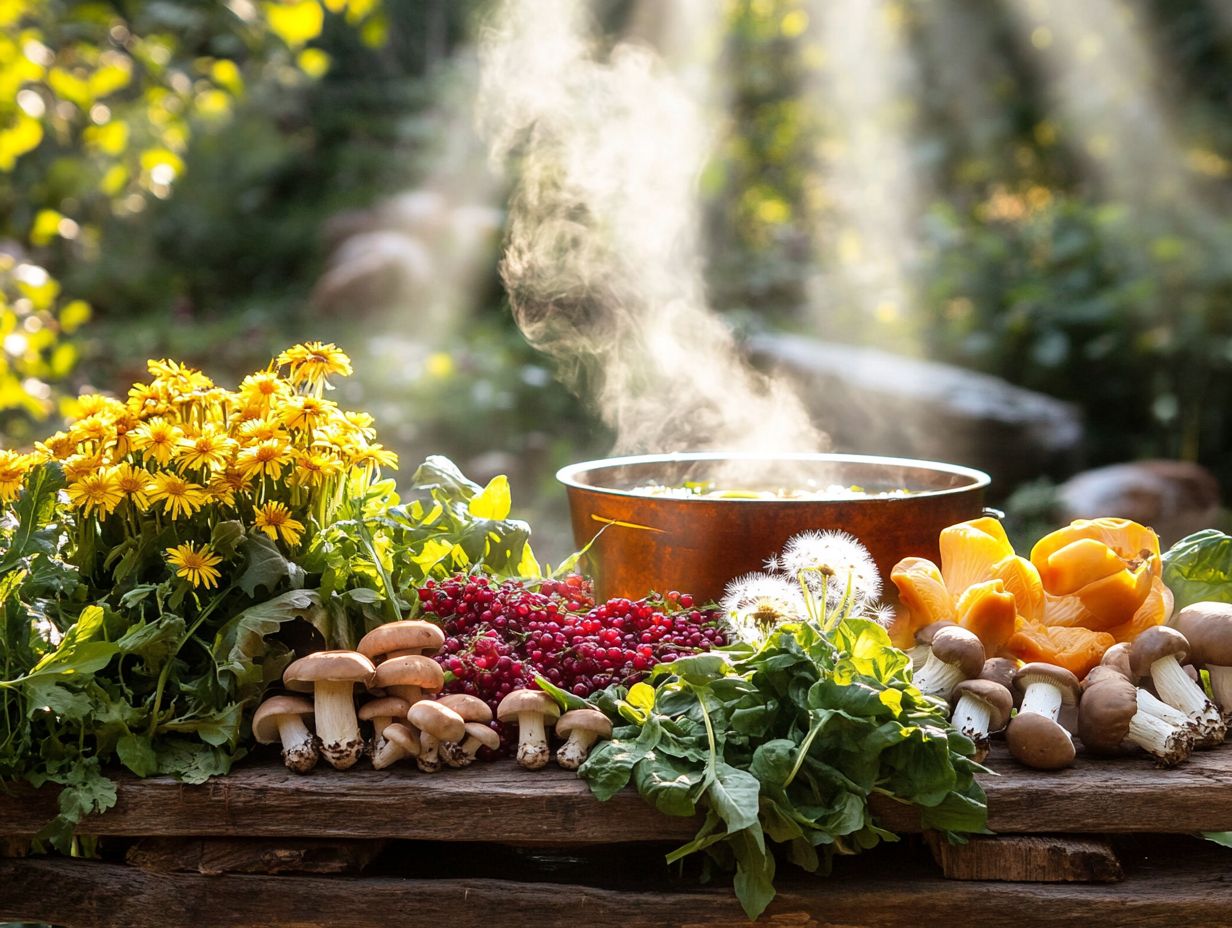
Cleaning and preparing foraged edibles is an essential part of the culinary journey. It ensures that ingredients like wild mushrooms and leafy greens are safe to consume and delicious, especially when you follow guidelines on how to forage edible plants safely.
Cleaning and preparing opens exciting possibilities, such as preserving foods and exploring fermentation recipes. These techniques enhance flavors and extend the shelf life of your culinary treasures.
Embrace this step and elevate your kitchen endeavors to new heights.
How to Properly Clean and Store Edibles
To effectively clean and store your foraged ingredients, it s crucial to follow specific steps that will ensure their freshness and quality. Enjoy wild foods now for the best flavor! This approach allows you to enjoy wild foods that can last anywhere from a few days to several months.
Understanding the unique characteristics of each ingredient whether it s mushrooms, berries, or greens is vital for their preservation. For example, wild mushrooms require a gentle brushing to remove dirt, while berries benefit from a quick rinse followed by thorough drying to prevent mold.
Utilizing breathable containers and storing them in cool, dark places creates optimal conditions for preserving your finds. This enhances the flavor and protects the nutritional value, ensuring that every meal made with your foraged treasures is rewarding.
Cooking with Foraged Edibles
Cooking with foraged edibles invites you to embark on a culinary adventure, unveiling a realm of creativity that showcases unique flavor combinations. Discover how to use foraged ingredients in cooking to enhance your dishes.
Imagine transforming your dishes with vibrant mushroom recipes or crafting a lively spring stir-fry, all while exploring the rich diversity that nature offers. This experience elevates your cooking and allows you to savor the bounty around you.
Tips and Techniques for Incorporating Edibles into Meals
Incorporating edibles into your meals can be both an art and a science. When you understand flavor profiles and utilize clever tips and techniques, such as how to preserve your foraging finds, you can transform simple dishes into culinary masterpieces, perhaps garnished with wild garlic or featuring a refreshing foraged cocktail.
To elevate your dishes, think about how different foraged components can enhance each other s natural characteristics. For instance, wild mushrooms can provide a rich umami depth a savory flavor that enhances dishes while a bright elderflower syrup adds a floral note that lightens heavier flavors.
Pairing foraged dandelion greens with a hearty grain salad creates an unexpectedly delightful contrast. Incorporating stinging nettles in a creamy soup offers both nutrition and a complex texture. By blending these elements with seasonal vegetables, you can craft meals that celebrate nature s bounty and intrigue the palate.
This approach showcases how creativity and an awareness of local ingredients can transform everyday cooking into something extraordinary.
Safety Considerations
When foraging, especially for wild mushrooms, safety considerations should be at the forefront of your mind. Misidentifying mushrooms can pose serious health risks, making it essential to understand the potential dangers.
By adhering to proper identification techniques, ensure your foraging journey is both safe and rewarding!
Potential Risks and How to Avoid Them
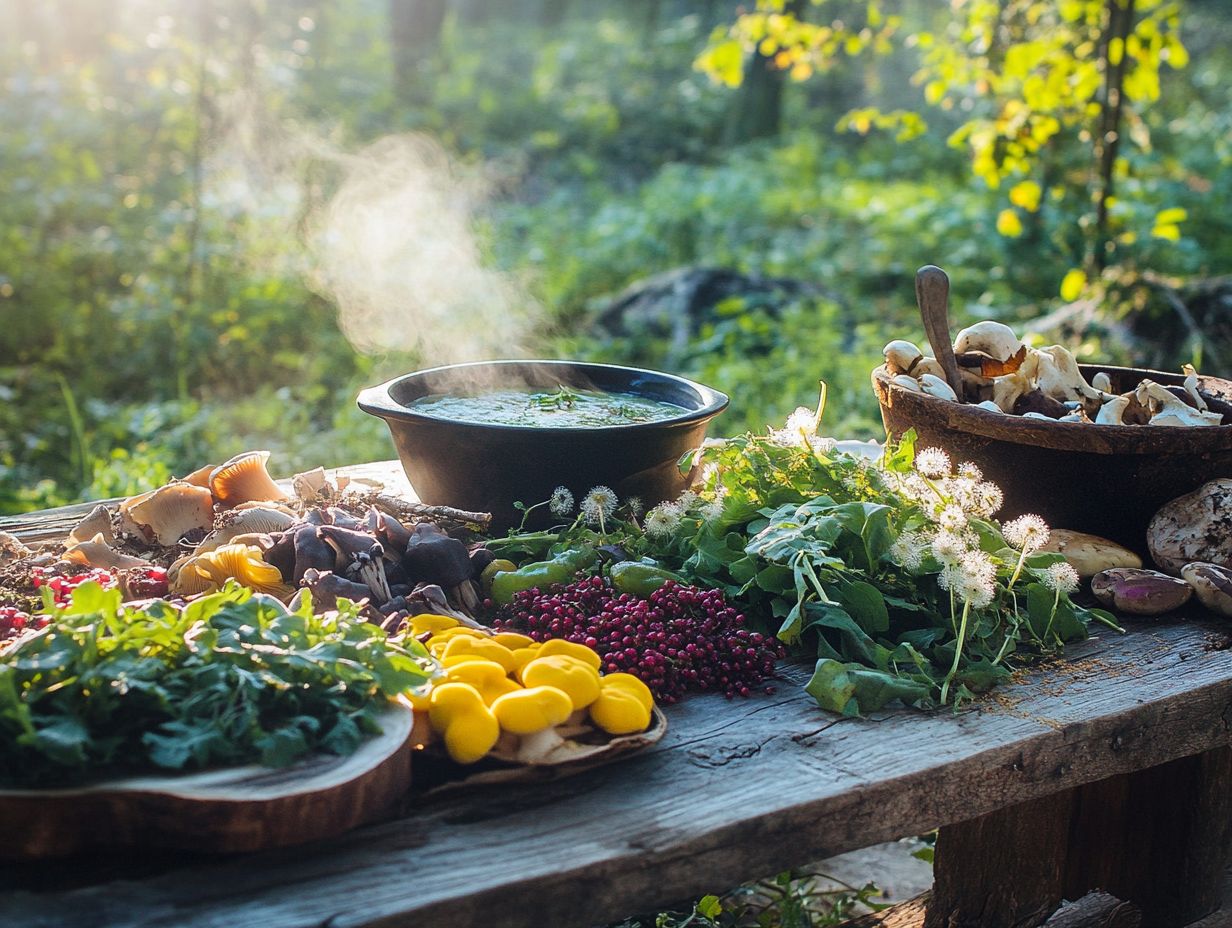
Foraging comes with risks. You could encounter toxic plants and mushrooms that look like safe options. It s essential to learn how to identify these species to avoid health hazards.
Without the right knowledge and tools, you may unintentionally harvest hazardous varieties, leading to serious health issues. This highlights the critical importance of education in foraging. You can pursue education through workshops, books, and online resources focused on plant and mushroom identification.
Using mobile apps to identify plants and animals can boost your confidence. Remember, even seasoned foragers must remain vigilant and cautious.
Connect with fellow foragers! Sharing your experiences can add fun and valuable insights to your adventures. A network can enrich your experience by allowing the exchange of information about recent findings and alerts regarding toxic species in your local area.
Foraging Ethics and Sustainability
Foraging ethics and sustainability are essential principles guiding your foraging endeavors. By embracing these concepts, you ensure that the harvesting of wild edibles is responsible, preserving ecosystems for future generations.
How to Forage Responsibly and Sustainably
To forage responsibly and sustainably, grasp the principles of ecological balance. This means harvesting in a way that allows ecosystems to thrive and regenerate.
Start by familiarizing yourself with the local flora and fauna. Recognizing signs of healthy growth is crucial. Employ techniques that minimize harm. For example, when picking wild mushrooms, leave some behind so they can spore and propagate. When harvesting plants, consider taking only a small portion to ensure continued growth.
Engaging with your local ecosystem through guided foraging tours can enhance your understanding and respect for the environment. By revering nature s resources, you elevate your experience and ensure that future generations can benefit from the wonders of nature.
Frequently Asked Questions
What are foraged edibles?
Foraged edibles are edible plants, fungi, or other foods found and collected from the wild, rather than grown on a farm.
Is it safe to eat foraged edibles?
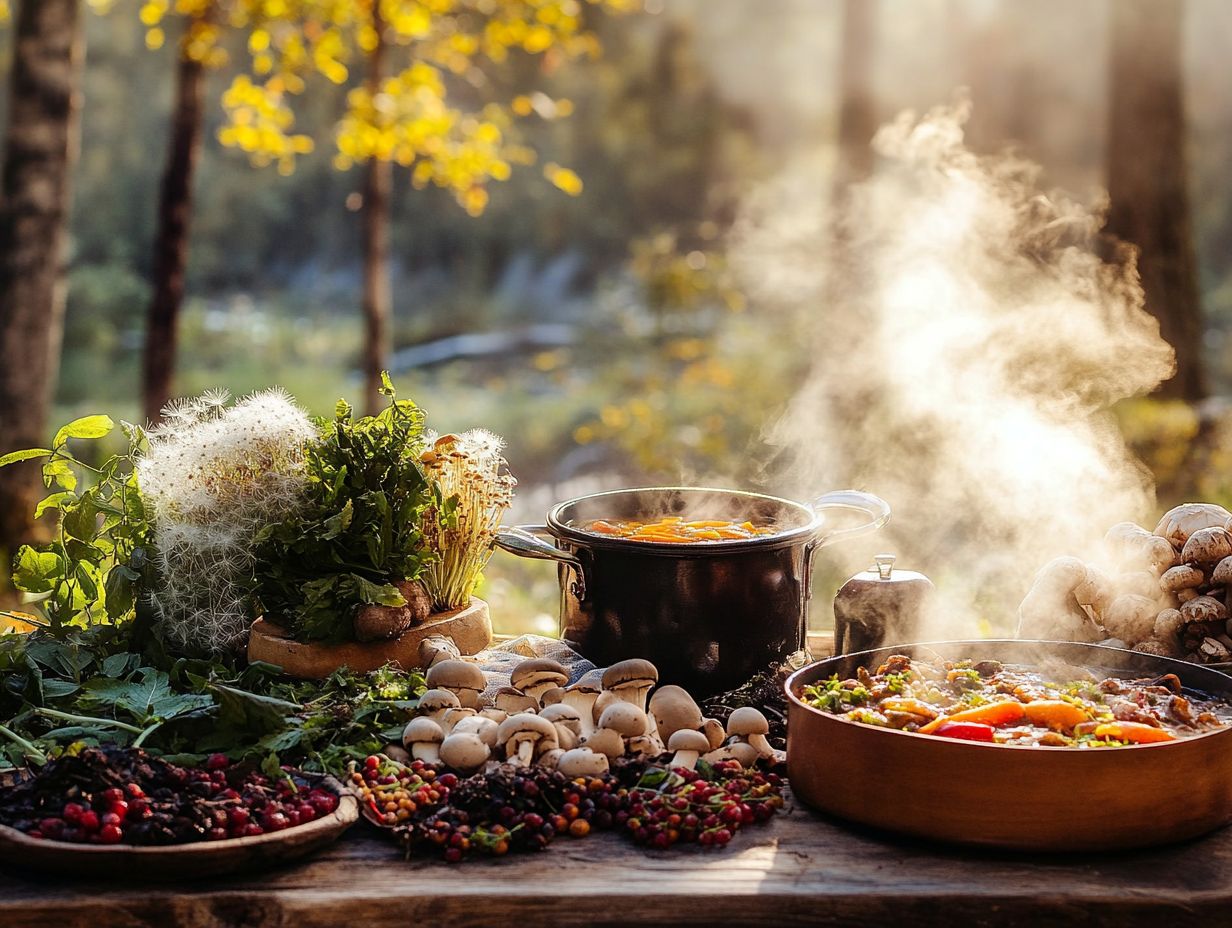
Yes, it’s safe if you can confidently identify the plant and confirm it’s edible. Always research and properly identify foraged edibles before consumption.
How do I know which foraged edibles are safe to eat?
Many resources, such as field guides and classes, can help you learn how to identify common wild edibles. Follow proper safety guidelines and avoid foraging in contaminated areas.
What are some common foraged edibles?
Common foraged edibles include berries, mushrooms, nuts, and greens. Different regions and seasons will offer various plants available for foraging.
What are some tips for cooking with foraged edibles?
Always wash and clean foraged edibles before cooking. Some may require specific preparation methods to remove potential toxins or improve taste. Learning how to use foraging techniques in cooking can enhance your dishes. Only take what you need to allow the plant to continue growing.
Can foraged edibles be used in any recipe?
Yes, foraged edibles can be used in a variety of recipes, like salads, soups, stews, and baked goods. To enhance your cooking, learn how to use edible plants in your cooking and research the flavor and texture of the foraged edibles to ensure they will work well in your recipes.
Start foraging responsibly today! Check out local workshops and resources to enhance your skills and knowledge.

